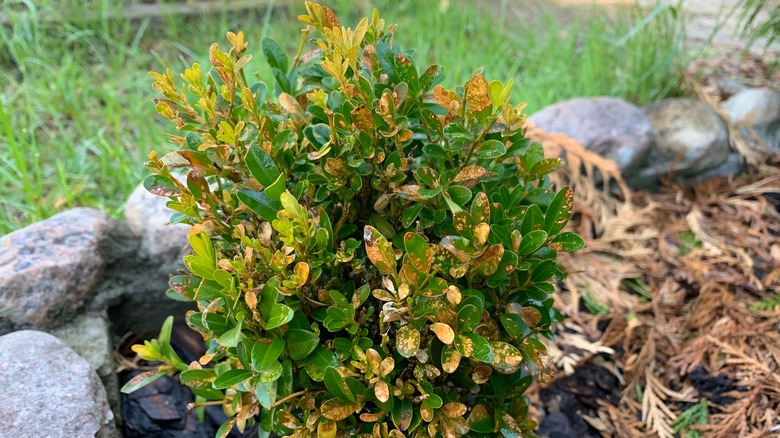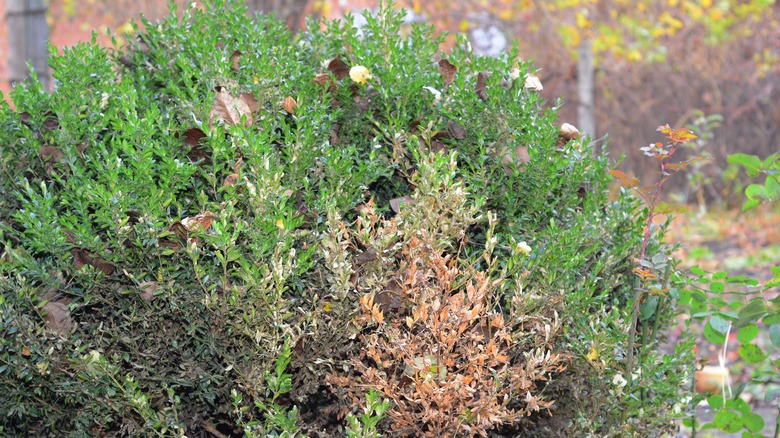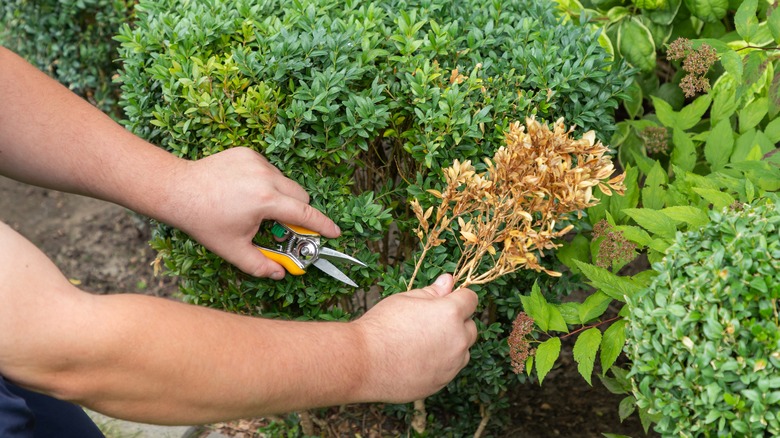Telltale Signs Your Tree Has Boxwood Blight And What To Do About It
Boxwood blight has quickly become a hot topic among many boxwood species. But what exactly causes it? Well, you're dealing with two main culprits here: Volutella buxi and Calonectria pseudonaviculata. Both are fungi, which don't waste time announcing their arrival. With distinct symptoms showing up on leaves and branches, leading to a drastic drop in foliage and the strength of your plants, spotting these early signs can truly make all the difference. It turns the tide in your favor, preventing a whole lot of headaches later on.
Now, you might be wondering how this blight spreads its chaos. Often, it's the small things that slip under our radar. The fungus is quite the hitchhiker, catching rides on tools, clothing, or any piece of infected plant material we come into contact with. Yes, without even realizing it, we could be unwittingly helping this disease. And sometimes, our well-meaning care creates the perfect conditions for the blight to thrive. Getting to grips with how boxwood blight spreads is crucial in the fight against it.
Here's something else to keep in mind: boxwood blight can be very serious. So, it's not just a cosmetic issue — it can also kill your plants. That's why taking care of your boxwood is vital; you need to spring into action at the first hint of trouble. Fortunately, though, there are plenty of strategies to manage and prevent this disease. It all starts with being proactive, keeping a watchful eye out, and acting swiftly.
Identifying boxwood blight: the early signs
Navigating the early stages of boxwood blight can feel like piecing together a puzzle, especially given the subtlety of its initial markers. These markers, though, are distinct. At the onset, the blight caused by the fungi Calonectria pseudonaviculata introduces itself with brown spots on the leaves. This is the first symptom that can easily be overlooked because plants can defoliate soon after leaf spots develop. These aren't just any spots; they're typically circular with a pronounced dark border. The fungus also creates loads of tiny structures called microsclerotia right in those infected leaves. That's the blight's way of bunkering down in the leaf litter and soil for the winter, ready to spring back into action when the conditions are right.
But the tale doesn't end there. As the infection deepens, defoliation becomes a stark reality, stripping the plant of its leaves and drastically affecting its health. This isn't just a visual concern; it weakens the plant significantly, making it more susceptible to other stresses and diseases. Furthermore, cankers — dead, sunken areas on the stems — begin to form as a testament to the disease's severity. The progression from initial spots to widespread defoliation and stem cankers underscores the aggressive nature of diseases. In the case of Volutella buxi infection, the leaves may go from a yellowish-green to bronze color and then to a yellow-tan. And it doesn't stop with leaves; it goes after the stems too, making the bark peel away or turn a sickly yellow.
What to do about boxwood blight
When treating boxwood blight, fungicides like chlorothalonil are useful for plants that are just beginning to show symptoms or are still blight-free. However, fungicides are just one piece of the puzzle. First, you'll want to isolate those affected plants. Think of it as putting them in their own little quarantine zone to keep the rest of your garden safe. And your gardening tools? They could be undercover agents for the blight, spreading it from plant to plant without you even knowing. Make sure to clean and disinfect them thoroughly after each use to cut off that mode of transportation for the fungus.
You'll also need to prune and thin out your plants to improve airflow. Although boxwoods are hardy shrubs, regular pruning helps remove infected parts and improve air circulation, which is key to keeping the rest of your plant healthy and dry. If you find any branches that are already infected, they've got to go. When disposing of those infected plant parts, remember that composting is off the table. Spores may survive in compost and find their way back into your garden. Instead, securely bag them and go for the trash can, or burn them if you're allowed. Lastly, if you're thinking of planting in the same spot again, you might want to think again. Switching to resistant varieties or entirely different species that don't attract the fungus could be a smart move to protect your garden in the long run.


